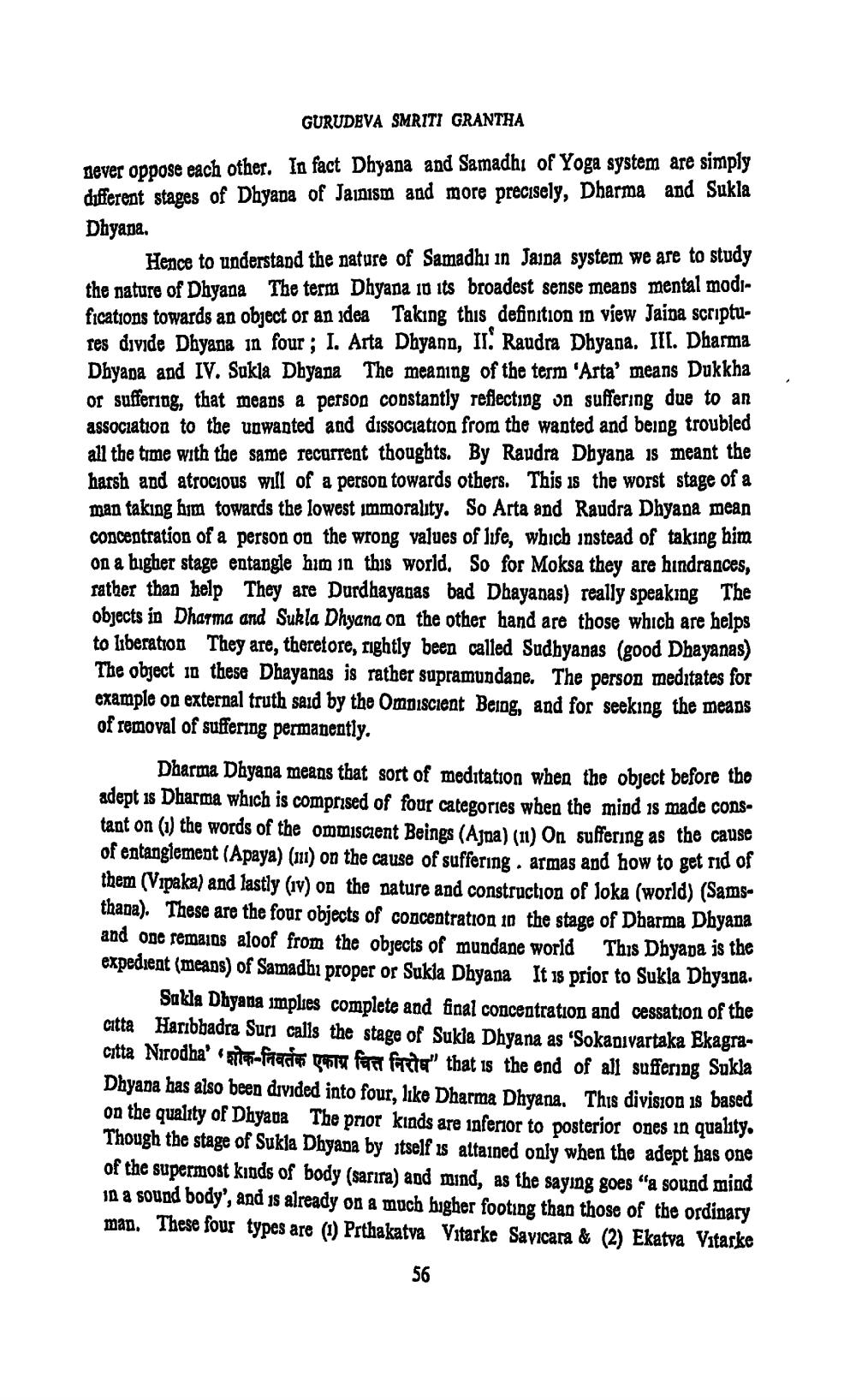________________
GURUDEVA SMRITI GRANTHA
never oppose each other. In fact Dhyana and Samadhi of Yoga system are simply different stages of Dhyana of Jainism and more precisely, Dharma and Sukla Dhyana.
Hence to understand the nature of Samadhi in Jaipa system we are to study the nature of Dhyana The term Dhyana jo its broadest sense means mental modifications towards an object or an idea Taking this definition in view Jaina scriptures divide Dhyana in four ; I. Arta Dhyann, II. Raudra Dhyana. III. Dharma Dhyana and IV. Sukla Dhyana The meaning of the term 'Arta' means Dukkha or suffering, that means a person constantly reflecting on suffering due to an association to the unwanted and dissociation from the wanted and being troubled all the time with the same recurrent thoughts. By Raudra Dhyana is meant the harsh and atrocious will of a person towards others. This is the worst stage of a man taking him towards the lowest immorality. So Arta and Raudra Dhyana mean concentration of a person on the wrong values of life, which instead of taking him on a bigher stage entangle him in this world. So for Moksa they are hindrances, rather than help They are Durdhayanas bad Dhayanas) really speaking The objects in Dharma and Sukla Dhyana on the other hand are those which are helps to liberation They are, theretore, fightly been called Sudhyanas (good Dhayanas) The object in these Dhayanas is rather supramundane. The person meditates for example on external truth said by the Omniscient Being, and for seeking the means of removal of suffering permanently.
Dharma Dhyana means that sort of meditation when the object before the adept is Dharma which is comprised of four categories when the mind is made constant on (1) the words of the ommiscient Beings (Ajna) (11) On suffering as the cause of entanglement (Apaya) (11) on the cause of suffering . armas and how to get rid of them (Vipaka) and lastly (iv) on the nature and construction of loka (world) (Samsthana). These are the four objects of concentration 10 the stage of Dharma Dhyana and one remains aloof from the objects of mundane world This Dhyapa is the expedient (means) of Samadhi proper or Sukla Dhyana It 18 prior to Sukla Dhyana.
Sakla Dhyana implies complete and final concentration and cessation of the citta Haribbadra Suri calls the stage of Sukla Dhyana as 'Sokanivartaka Ekagracitta Nirodha' 9117- Francia var fart förstar" that is the end of all suffering Sukla Dhyana has also been divided into four, like Dharma Dhyana. This division is based on the quality of Dhyapa The prior kinds are inferior to posterior ones in quality. Though the stage of Sukla Dhyana by itself is attained only when the adept has one of the supermost kinds of body (sarıra) and mind, as the saying goes "a sound mind In a sound body, and is already on a much bigher footing than those of the ordinary man. These four types are (1) Prthakatva Vitarke Savicara & (2) Ekatva Vitarke
56




